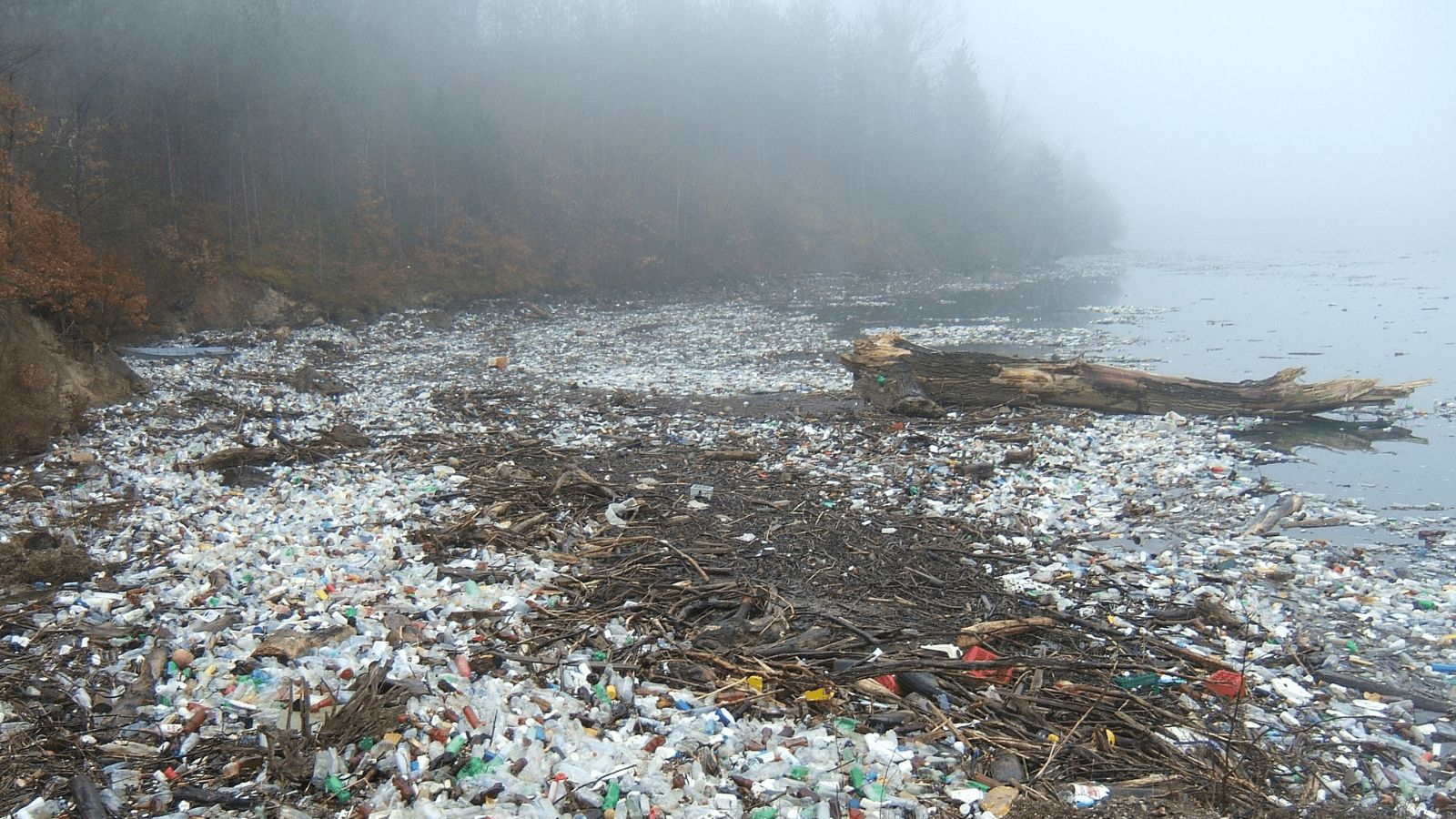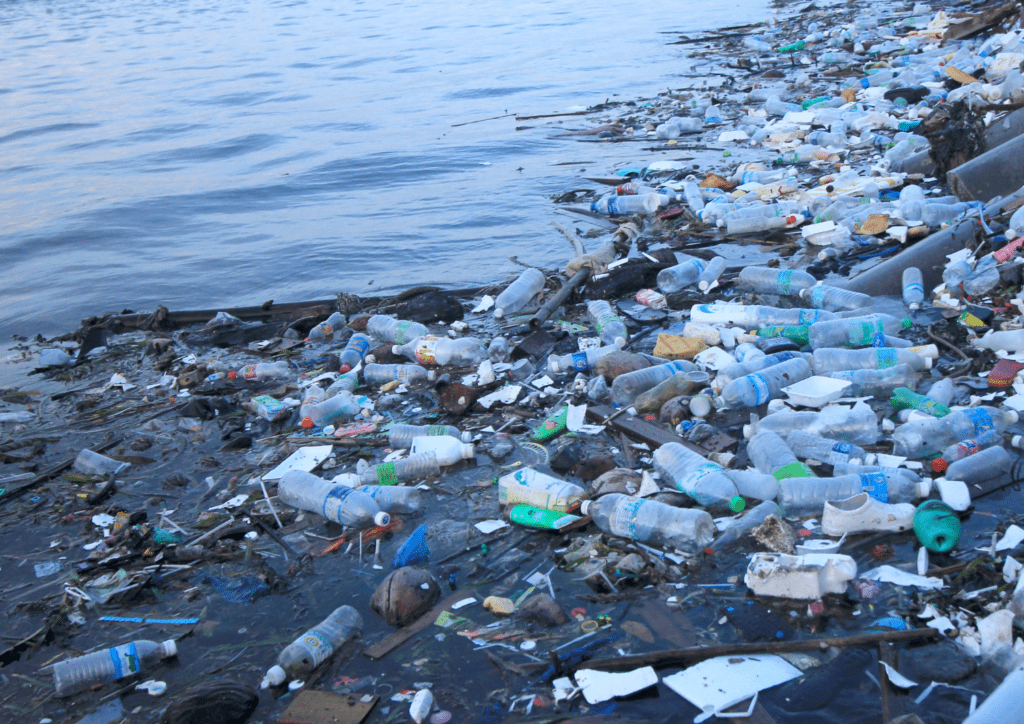Co-written by Jane McArthur, Toxics Program Director at Canadian Association of Physicians for the Environment and Honour Stahl, Executive Director at Women’s Healthy Environments Network
This year, the focus of World Environment Day is to #BeatPlasticPollution. And there are so many reasons to do it, from protecting the environment and all living things from the pollution caused by plastic manufacturing, use and waste, to ensuring workers who make plastic products aren’t being exposed to the dangerous chemicals that are used in the process.
Winning the fight against plastic pollution will require tackling each toxic branch of the plastic “death-spiral”, from cradle to grave. From the extraction of oil to the exportation of waste, plastic pollutes the air we breathe, the food we eat, and the water we drink.
Worldwide, 460 million tonnes of new plastic are made in a year and production is rising exponentially. Single-use plastic waste is at record levels, with a hefty climate toll. One report warns: “Plastics are essentially fossil fuels in another form…98% of single-use plastics come from fossil fuel feedstocks. It is no coincidence that ExxonMobil, one of the biggest fossil fuel producers in the world, also ranks as the world’s top producer of single-use plastic.”
Despite widespread use of plastics in healthcare, plastic is not benign
One of the plastic industry’s favourite pro-plastic arguments is to say that their product is a health care hero. They say the need for plastics in healthcare means we can’t ban or control its production. This argument seeks to shut down the conversation. It also ignores some important facts when it comes to plastic’s impact on our health.
It is true that there are many applications for plastics in health care. From intravenous bags, specimen collection containers, catheters, syringes, vials and gloves, plastic is ubiquitous. However, some of these uses come with health costs that Industry fails to mention when it centres healthcare applications in its defensive messaging.
Plastic devices made of polyvinyl chloride plastics (PVC) containing di-2-ethylhexyl phthalate (DEHP) to make them flexible, are of particular concern to physicians and healthcare workers in the care of their patients. PVC, DEHP, and other toxic substances in plastics are harmful to humans even in healthcare settings. Certain populations, including dialysis patients and hemophiliacs, have long-term exposures to troubling amounts of DEHP, and newborn babies are exposed during critical points of development. This exposure can lead to a range of adverse effects in the liver, reproductive tract, kidneys, lungs, and heart. Developing infants and children are particularly susceptible to effects on the reproductive system.
Plastic is costing us. Big time. The global costs of treating plastics-related illnesses and trying to clean up waste in the environment are pegged at a staggering $800 billion CAD.
But the reality is that safe alternatives to plastics in healthcare are already being implemented. One US healthcare provider has already eliminated the use of PVC and DEHP in IV bags and is prohibiting PVC in new furniture and flooring. We expect this trend to grow.
Workers manufacturing plastic products are exposed to a cocktail of toxic substances
Workers are exposed to high levels of carcinogens, neurotoxins, heavy metals, flame retardants, phthalates, bisphenols, and endocrine disrupting chemicals (EDCs) during plastics production. Retired Pebra Plastics Plant worker and former union local president Rose Wickman reports miscarriages, hysterectomies, infertility and deaths among co-workers. Wickman and others worry that “nobody wants to listen to the workers.”
Women, racialized, and Indigenous people disproportionately experience the adverse health outcomes of the manufacture of plastics and exposure to plastics in and around consumer goods. Sarnia, Ontario, is home to one of the largest clusters of manufacturing facilities in this sector and workers and residents in nearby communities, including Aamjiwnaang First Nation, are suffering from exposure to toxic gases, chemical waste, and air pollution.
Plastic is taking over our grocery stores, and that means it’s in our food
But plastic pollution does not stop there. With more than 70 percent of grocery store products wrapped in plastic, exposure to toxics has become unavoidable for the average consumer. Plastic pollution is a risk to public health that is causing concern for more and more people in Canada, with some populations at more risk than others. The high levels of endocrine disrupting chemicals in plastics cause disproportionate harm to people with ovarian reproductive systems.
With human health at risk, government must do better at getting plastics off the shelves and out of healthcare settings where possible. With the recent success of a modernized Canadian Environmental Protection Act that will – for the first time in federal law – include the right to a healthy environment, reducing plastics is not only possible but a right to be acknowledged for the sake of human and planetary health. But action cannot stop there.
The solutions are clear and we must move on them together
Governments, who met last week in Paris to continue negotiations for a global treaty on plastic pollution, must commit to an ambitious deal that includes major reductions to plastics production worldwide, keeping oil and gas in the ground, executing more comprehensive single-use plastic bans, building large-scale refill and reuse systems, and holding big polluters like Exxon – which is the majority shareholder of Canada-based Imperial Oil – accountable for putting profits over people.
Canada’s federal government also needs to keep up the pressure to eliminate single-use plastics, phase out hazardous chemicals related to plastics, and replace packaging, where it’s needed, with reuse and refill systems.









